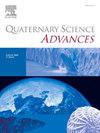The region of the Himalayan arc covering Sikkim and eastern Nepal experiences dominant strike-slip deformation oblique to the convergence direction of the Indian plate. This region is also traversed by transverse structural and tectonic features. The present study is aimed at comprehending the horizontal and vertical deformation rates for this region using the PSInSAR technique. We utilized 70 and 78 Single Look Complex images in ascending and descending passes respectively, spanning from February 2017 to August 2023 for time-series displacement measurement along the radar line of sight (LOS). The results reveal the LOS velocity ranging from −15 to +10 mm/yr for the ascending data and ±20 mm/yr for the descending data. The mean line-of-sight velocities of ascending and descending passes were decomposed to estimate the horizontal (east-west) and vertical components of the deformation vector. These components range from ±15 mm/yr and −12 to +8 mm/yr, respectively, suggesting that the horizontal deformation predominates in the study area. A NW-SE trending boundary coinciding with the Tista lineament sub-divides the study region into the eastern Nepal and the Sikkim blocks based on the patterns of the deformation rates. The eastern Nepal block south of the Main Central Thrust exhibits locked portion of the arc with eastward motion, whereas the Sikkim block exhibits uplift (unlocked with creep) and westward motion. The amplitudes of these deformation rates support dominant strike-slip deformation with minor vertical deformation component. These results suggest that the Tista lineament is a prominent strike-slip fault and probably the most significant active tectonic feature in the region. Together with the seismicity data, we infer that probably the entire crustal block rather than the Himalayan wedge is contributing to the surface deformation, as mapped by the present PSInSAR study.


